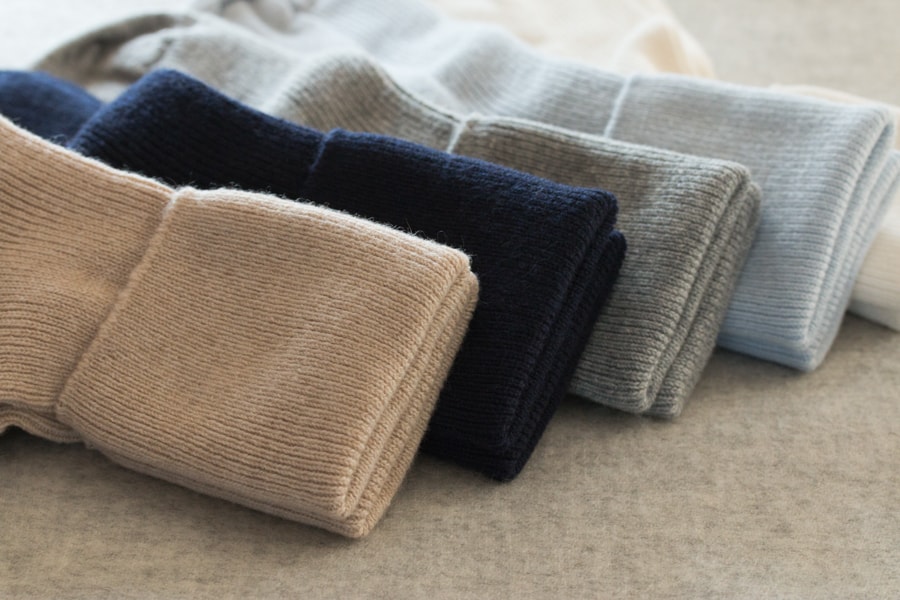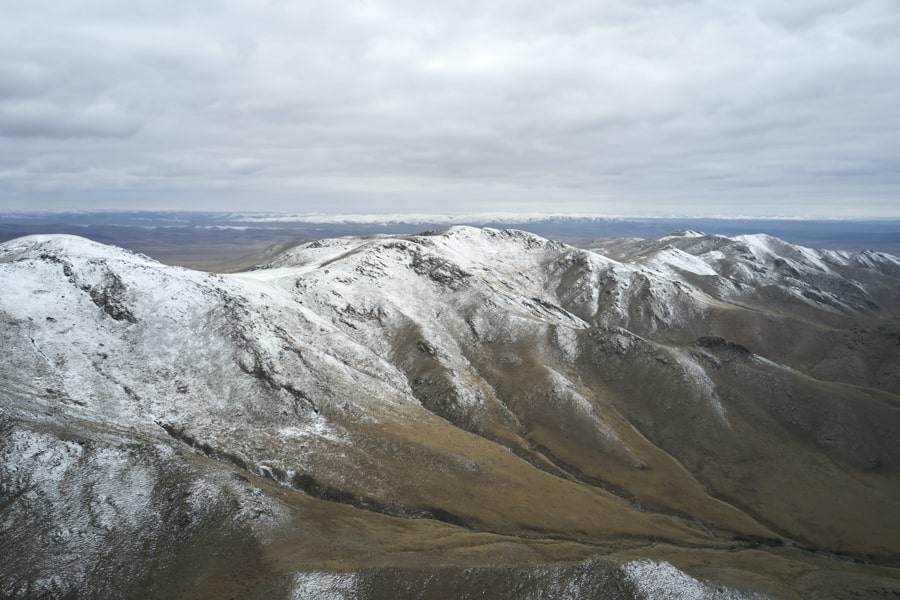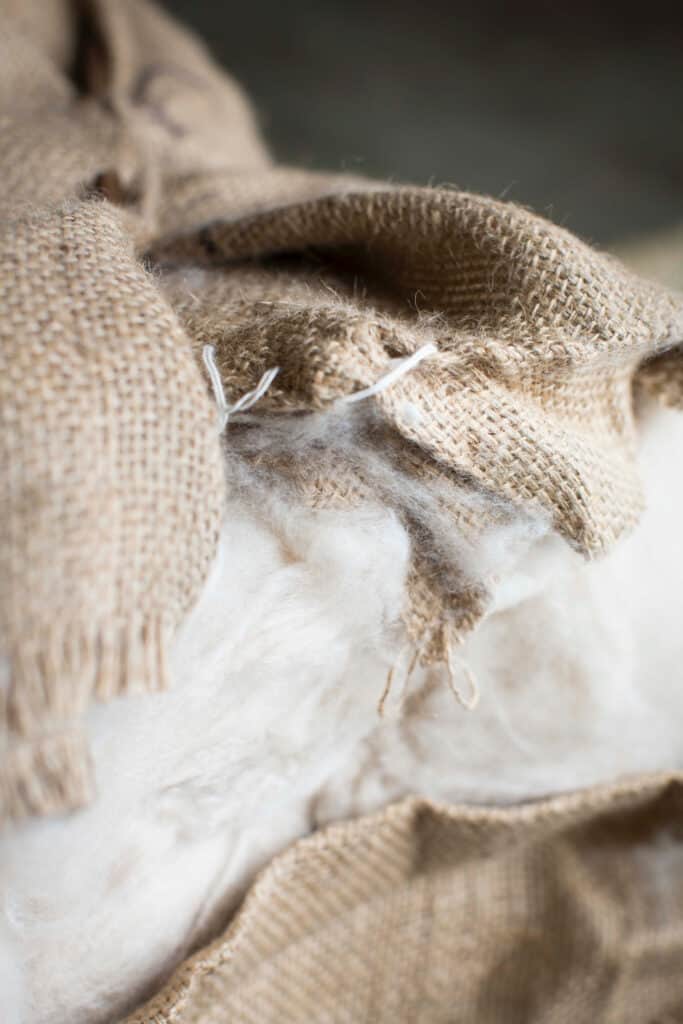
Is Cashmere Cruel? How This Luxurious Supplies is Produced
Is cashmere cruel? Cashmere wool is made by breeding, sustaining and harvesting the undercoat of goats dealt with as livestock and income-producing property. On this alone, supporting the cashmere enterprise is taken under consideration cruel and unethical regarding goat welfare.
Goats are moreover extraordinarily damaging to the planet, inflicting further damage than good to ecosystems and wildlife. Must we then be breeding further?
Then you definately’ve received Mongolian herders who’ve been shepherding cashmere goats for tons of of years. It’s a apply handed down from know-how to know-how and is among the many few viable and revered careers inside the space. What about them?
There’s hundreds to unpack proper right here as we uncover the ethical nuances of the cashmere enterprise.
Nevertheless first, let’s briefly break down this “magical” materials and its premium ticket.
What’s cashmere, and the place does it come from?
Cashmere is an expensive fibre that’s mushy, versatile and very warmth.
It’s 3 cases further insulating than wool and thinner than a human strand of hair. This suggests chances are you’ll placed on a lightweight garment whereas nonetheless sustaining warmth.
Cashmere is generally used to make sweaters, scarfs and beanies. A typical cashmere sweater will worth anyplace between $120 to $1,000.


Why so pricey?
Properly, cashmere fibre comes from the undercoats of specific goat breeds. These goats are typically found all through the Himalayas, the place temperature can get proper right down to minus 30 ranges Celsius (damaging 22 ranges Fahrenheit).
The goats develop a very thick coat, and their inside hair (the cashmere) has very top quality fibres to cope with the chilly conditions.
Cashmere is harvested yearly, usually in spring when the goats are naturally starting to shed. Herders each clip or comb out the fibres when the goats moult.
The frequent cashmere yield for a goat is 200 grams (7.05 ounces). For comparability, sheep produce 3 kilograms (6.61 kilos) of wool a yr.
Study further: Is Wool Vegan? Ethical Problems with The Wool Commerce
You’ll need 5-10 goats to offer merely 1 cashmere sweater.
It’s the combination of uncommon harvesting, the comparatively small yields, and the fascinating properties that makes cashmere so premium.
How big is the cashmere enterprise?
Cashmere accounts for almost 7 per cent of the $71.2 billion worldwide luxurious market.
To get a slice of this worthwhile pie, farmers have elevated their flocks, and 29 million goats worldwide graze the steppes proper this second, which is 5 cases the amount 30 years up to now.
Consistent with the Worldwide Wool Textile Organisation, roughly 25,208 tonnes of cashmere was produced in 2020.
China dominates raw cashmere exports, producing 60 per cent of world output, with Mongolia coming in second, making up 20 per cent of producing.
A very powerful importers of cashmere are in Europe (the UK, Italy and Germany), making up 38% of the worldwide share in 2018.
Whereas cashmere continues to be a robust market, with acutely aware consumers demanding further sustainable and ethical practices, large companies have boycotted cashmere to reply these altering shopper preferences.


In 2019, big retailer ASOS pledged to ban any garments made with cashmere (and mohair and silk) from their on-line retailer.
Patagonia made modifications to restrict their garments line solely to utilize recycled cashmere.
Why the shifts? Rising points for animal welfare. Let’s dive just a bit deeper.
Study further: Is Mohair Ethical? What You Need To Know
Is cashmere cruel to animals?
To understand the levels of animal cruelty inside the cashmere enterprise, we now have to place the provision chain under the microscope. And what greater place to start than with the 2 largest exporters: China and Mongolia.
The world accountable for many of China’s cashmere manufacturing is named Inside Mongolia. Inside Mongolia was as soon as part of Mongolia until China gained administration of the realm and renamed it. Outer Mongolia, the rest of the nation, is what everyone knows proper this second as Mongolia.
Difficult, I do know! Nevertheless we would like this context as we switch forward.
Devastating cruelty at cashmere farming
On the additional extreme end of the spectrum, footage has been captured of inhumane practices in China (Inside Mongolia), along with:
- Goat’s throats are slit in slaughterhouses the place completely different goats might very properly be seen.
- Workers had been seen stepping in and twisting goats limbs as they aggressively tore their hair out using metallic combs.
- Goats are left with primarily untreated cuts and wounds with none veterinary care. Some workers had been seen pouring rice wine on wounds.
- Workers had been seen taking a hammer to a goat’s head, making for a sluggish and agonising demise.
- Goats generally keep to spherical 12 nonetheless are generally seen unprofitable from 6 and slaughtered and despatched off for meat prematurely.
There’s little query that these goats are exploited for his or her hair, and this observe is one thing nonetheless ethical. Nonetheless, merely all through the border is one different methodology to cashmere farming.


A lot much less cruel practices in typical Mongolian practices
As a result of the native climate modifications in Mongolia, so do their herders. These semi-nomadic of us use this to their profit by transferring between seasons to entry new pastures which may be greater suited within the path of cashmere goats, who require further choice when it comes time to breed them — a technique that has been perfected over centuries.
In distinction, the farmers in Inside Mongolia (China) who generally tend these animals can no longer switch them between customary pastures because of elevated industrialisation. They should now protect their herds inside barns most of the time with fences spherical them so that they do not wander off too faraway from human contact under Chinese language language laws enforcement companies’ watchful eye.
There’s a symbiotic relationship between Mongolian herders and their goats.
Not like many alternative livestock manufacturing strategies worldwide, it could very properly be argued that Mongolian goats benefit from a couple of of the largest freedoms. There are not any fences, they often roam freely with out constraint or concern about getting misplaced on this large panorama.
Nevertheless even on this semi-wild lifestyle, the goats nonetheless face their share of hardships.
As an illustration, herders inside the Gobi desert of Mongolia face extreme uncertainty and hazard each single day, nonetheless they must be versatile for his or her herds’ desires.
The terrain is harsh with little water on the market; it’ll probably stand up close to 35°C (95°F) all through summer season season months or dip beneath -40°C (-40°F) inside the wintertime.
Nonetheless, unpredictable local weather patterns make planning troublesome because of there may instantly come flooding from heavy rainfall one week solely then current no sign the least bit sooner than one different excessive flood happens a variety of days later.
Lack of meals and water
Due to the powerful local weather, goats inside the Gobi wrestle to devour adequate water. With out entry to springs or rainwater, they’re relying on flooring wells and handbook pumps for his or her hydration desires. Thankfully these goats can go longer with out ingesting than most completely different animals.
Goats usually starve all through winter and spring when vegetation is at its most sparse. There are events of the yr when goats will go days with out consuming because of they can’t uncover one thing to eat.
Some herds do get hold of supplementary feed, however it certainly’s not adequate for all members. Priority is given within the path of youthful or weak folks first, guaranteeing survival fees hold extreme adequate until hotter local weather arrives as soon as extra.
Lack of veterinary treatment
Private veterinary care is pricey and troublesome to entry for lots of Mongolian goat herders. In any case, there are exceptions, nonetheless as an entire, this poses pretty the difficulty.
If a goat will get sick or injured, it’s maybe a while sooner than they may cope with their scenario as veterinarians usually keep in cities barely than making frequent visits throughout the countryside.
Some gained’t get hold of any treatment because of these constraints, and individuals who do couldn’t get top quality care.


Painful castration course of
Herders carry out castration surgical procedures with none anaesthetic, and it’s usually completed at spherical 6 months of age, so billy’s can’t mate with females inside the herd.
If it wasn’t for this course of, there might be no method for herders to control what variety of offspring received right here from each animal (and thus, sturdy genetic traits might in all probability disappear).
After eradicating the testicles, they’re generally boiled and used as part of a soup.
Goats are slaughtered for meat
Mongolian goats are slaughtered for meat as quickly as they develop into older, and the amount of cashmere produced by them reduces (along with its top quality).
Goats are turned onto their backs, held by the legs, then they shortly plunge a sharp knife into the chest cavity to cut the precept artery, guaranteeing swift demise with out spilling blood. Every part of these animals is used, along with pores and pores and skin/fat or milk, to provide a meals provide for the herding communities.
So whereas the goats of Mongolia keep a semi-nomadic lifestyle that rivals that of a wild upbringing, they’re nonetheless thought-about livestock. This isn’t a sanctuary. There’s monetary value associated to each goat.
Furthermore, goats are bred to exist in harsh local weather conditions with an absence of meals, water and veterinary care. And at last, as quickly as they’re no longer productive each for hair or milk, they’re slaughtered for meat.
It’s for these causes that buying cashmere, whether or not or not it’s produced in customary Chinese language language or typical Mongolian practices, continues to be cruel to every farmed goat.
The environmental have an effect on of cashmere farming
Cashmere herding dominates farming trades in Mongolia, with cashmere goats accounting for 41.3% of your complete number of livestock, whereas sheep make up 45.5%.
BBS research that there are 1.2 million nomadic herders in Mongolia, representing 40% of the nation’s inhabitants.
As cashmere prices fluctuate and inflation goes up, producers actually really feel immense pressure to increase herd numbers to keep up their corporations afloat.
The cashmere goats of Mongolia are being ruined by a vicious cycle weakening the nation’s present chain and pure environment. As grass perishes, feed availability decreases for these animals, leading to undernourishment.
Fibre top quality falls because of an absence of high-quality meals sources like tree bark. This impacts every yield ranges and the worth paid when selling cashmere materials on worldwide markets.
The consequence? Herders buy or breed further goats than ever sooner than, offsetting any losses introduced on by lower yields.
Although Mongolia’s pure grasslands can barely keep the rising numbers, they hurt topsoil and root constructions with their sharp hooves. Goats nibble extraordinarily close to plant roots, which hurt topsoil and root development.


Presently, overgrazing has severely damaged 70 per cent of the grasslands, making them look like deserts.
Overgrazing has harmed the habitats of fairly a couple of native large animals, which have struggled to survive.
Furthermore, native climate change is a component given that intensified breeding of goats and completely different farmed animals contributes to elevated methane emissions. Consistent with goat herders inside the space, the enterprise’s enlargement is inflicting their grasslands to fade.
The United Nations reported that just about 90 per cent of Mongolia is arid terrain, making it extraordinarily inclined to desertification.
Mongolia is a hotbed for native climate change, with temperatures rising by 4°F since 1940 in its place of the worldwide frequent of 1.5 ranges.
In 2009 native meteorological stations reported a 150 per cent enhance in disasters spurred by extreme local weather events.
Herders are put in a difficult state of affairs of balancing between making ends meet and sustaining their herd numbers right down to cut back environmental destruction.


Is there such an element as cruelty-free or vegan-friendly cashmere?
There isn’t a fashion of producing or farming cashmere that doesn’t impact the animals, folks, and environment in a roundabout way. For that cause, many vogue companies have boycotted cashmere from China and certain parts of Mongolia to promote ethical practices.
The environmental have an effect on of cashmere farming continues to worsen as herders proceed to breed further goats than their pure habitats can help. Sadly, there isn’t a easy reply to the difficulty that doesn’t put anyone further into poverty.
Nevertheless there are some good choices to cashmere, along with Re.VerSo produced from pre-consumer manufacturing facility left-overs of wool and cashmere by 5 of Italy’s essential textile producers. It’s a completely clear, licensed and traceable system that has attracted the curiosity of designers who’re desperate to lower their environmental have an effect on with out sacrificing luxurious.
One different promising sign is The Good Cashmere Regular, a non-profit group dedicated to elevating the necessities of cashmere goats with respect to the 5 Freedoms, along with the monetary, social, and environmental conditions confronted by Inside Mongolia’s cashmere farmers, their households, and communities.
They’ve set clear requirements for sustainable cashmere manufacturing. Unbiased auditors repeatedly confirm to confirm these necessities are being met.
Within the occasion you do resolve to purchase merchandise using cashmere, seek for devices labelled with the Good Cashmere Regular. You could as properly uncover an inventory of partnered producers on their web page.
It could be troublesome to go looking out really sustainable and cruelty-free cashmere, nonetheless there are some good choices with a smaller environmental footprint.
Do you suppose supporting cashmere is cruel?
So, is purchasing for cashmere cruel? The reply isn’t a simple certain or no. Standard Mongolian practices in cashmere farming are a lot much less harsh on goats than customary farming, nonetheless they arrive with their very personal ethical and environmental impacts.
There are cruelty-free selections for cashmere, nonetheless they’re usually dearer and extra sturdy to go looking out. In the long run, whether or not or not or to not buy cashmere comes down to personal choice. What do you suppose? Share your concepts inside the suggestions beneath.


